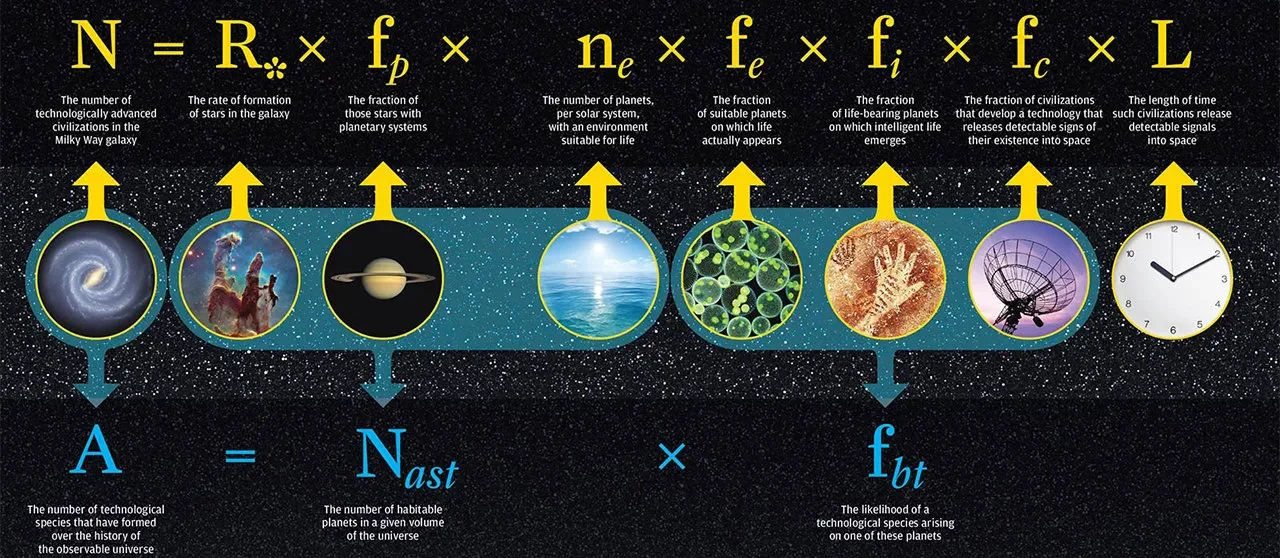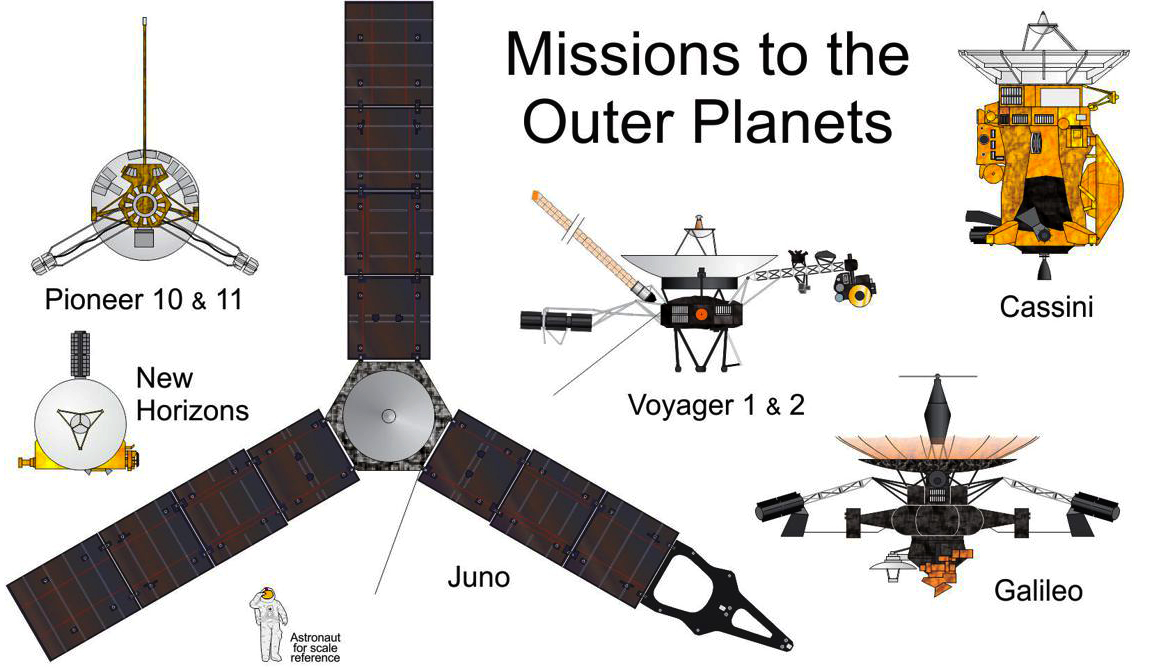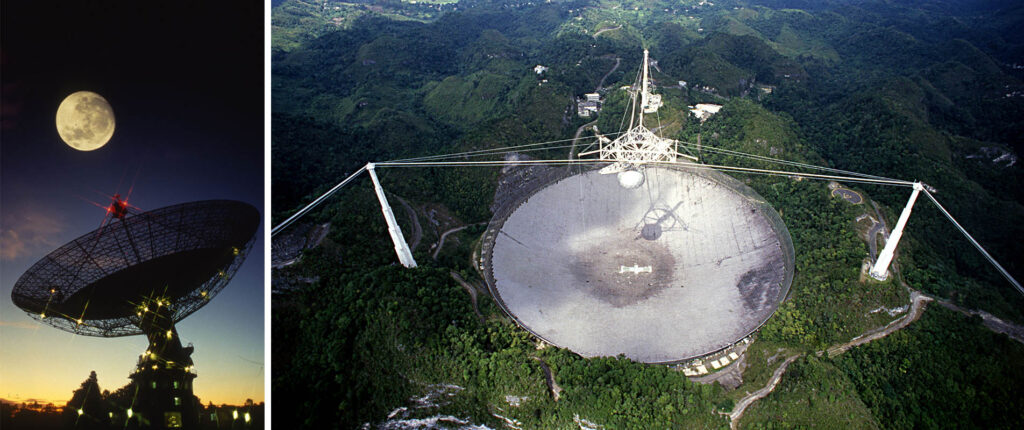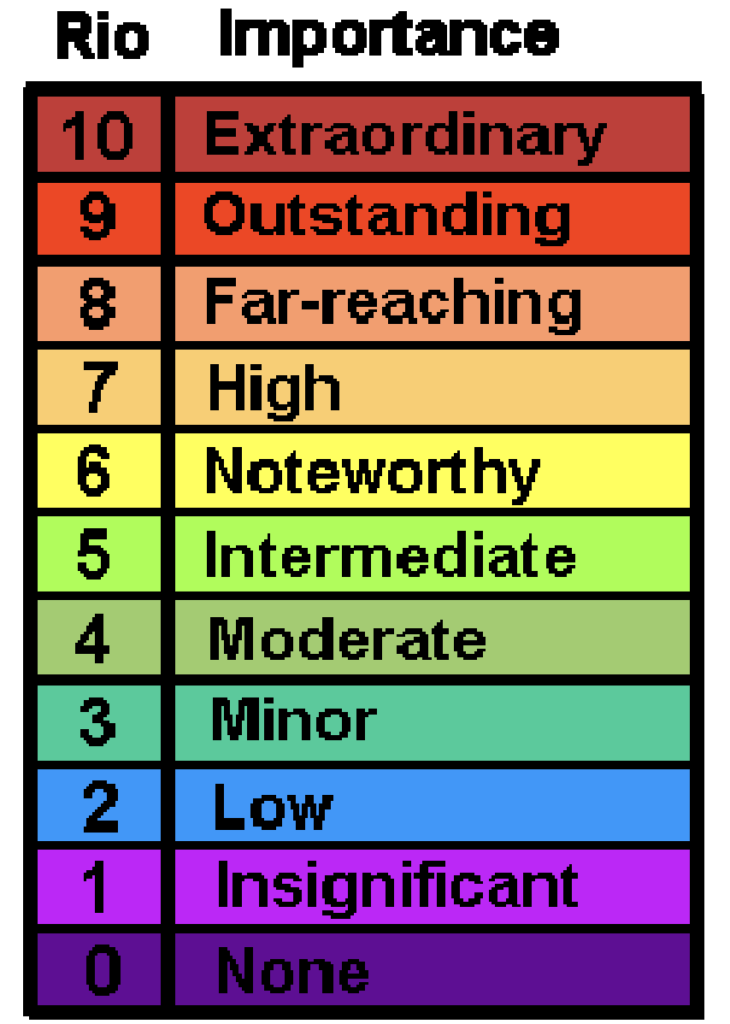TL;DR Summary:
If humanity receives a signal from extraterrestrial intelligence, there is no formal global protocol for response, leaving organizations like SETI’s “Declaration of Principles” as a potential guide. Detection would involve verification, global notification, and consultation under the Outer Space Treaty. Tools like the Rio Scale would measure a signal’s significance based on credibility and impact. The lack of a playbook reflects uncertainty about the implications of alien contact, from potential unity to exploitation or conflict, echoing human history. Contemplating alien contact serves as a thought experiment, helping us explore our values, fears, and aspirations while confronting the unknown.
What do we do if we Make Contact with Aliens
If we someday pick up a signal from intelligent life beyond Earth, what would actually happen next? Although this scenario remains highly improbable, it’s a question that compels us to consider the procedures, the preparations and the profound meaning such an event would have for humanity.
Surprisingly, no government on Earth has officially adopted a clear post-detection policy. Even when the United Nations Office for Outer Space Affairs was asked how they would handle a confirmed extraterrestrial message, their response was essentially that the question does not fall under their mandate. This lack of preparation might sound alarming, but it doesn’t automatically spell chaos. Instead, it highlights how uncertain and uncharted this territory truly is.
Interestingly, our species has historically made decisions based on the assumption that alien life could exist. For instance, when we first sent astronauts to the Moon, NASA worried not only about what we might find there but also what we might bring back. The concern was “back contamination”, which is the possibility that returning spacecraft could carry extraterrestrial microbes capable of wreaking havoc on Earth’s biosphere. This worry was so serious that the Apollo 11 crew—Neil Armstrong, Buzz Aldrin, and Michael Collins—were quarantined in isolation for three weeks after their return. As our exploration continued, so did our caution. The Galileo spacecraft, which studied Jupiter and its moons, was never fully sterilized. Fearing that it might contaminate a potentially life-supporting environment like Europa, NASA intentionally guided Galileo into Jupiter’s atmosphere at the end of its mission to ensure it would burn up, rather than crash onto a moon and spread any terrestrial microorganisms.
In terms of receiving a signal from intelligent life, the closest thing we have to guidelines can be found in organizations like SETI (Search for Extraterrestrial Intelligence) and the International Academy of Astronautics. They have drawn up “declarations of principles” suggesting what to do if we detect a genuine extraterrestrial message. None of these recommendations have formal legal weight, but in the event of a real discovery, they might well become our de facto manual.
The procedure would likely begin quietly. The discoverers would carefully verify the signal, trying to rule out interference, hoaxes, or natural cosmic phenomena. All the while, the news would probably leak, and media would run wild with speculation. At the point when experts are certain the signal is real, they would notify the Central Bureau for Astronomical Telegrams, informing observatories worldwide and, by extension, the Secretary-General of the United Nations. This step references the Outer Space Treaty, which implies that such a monumental discovery should be shared openly with all humankind.
To communicate the significance of a detection to the public, astronomers might use the Rio Scale. This scale evaluates an extraterrestrial signal’s importance based on credibility and potential consequences. Factors include whether the message is simply a distant, indecipherable anomaly or a nearby, clearly intentional communication. As evidence accumulates, the Rio Scale score would guide how scientists, governments, and media describe the find. For example, an ambiguous signal that turns out to be a natural phenomenon would score low and fade into obscurity, while an unambiguously artificial signal, especially from a location close enough to attempt a reply, could rank near the top—an “extraordinary” scenario with profound implications.
1. The SETI Post-Detection Protocols (IAA Principles)
Origin and Purpose:
- The International Academy of Astronautics (IAA), along with other bodies like the International Institute of Space Law (IISL), developed these protocols to offer a consistent approach in the event of detecting a credible extraterrestrial signal.
Core Steps and Principles:
- Verification of the Signal:
- Once a suspicious signal is detected, the discovering party should first ensure it’s not due to natural phenomena, interference, or internal equipment error. This includes cross-checking with other observatories.
- The verification process must be as rigorous as possible to avoid false alarms.
- Notification of the Scientific Community:
- After a strong verification, the discovering entity should inform the broader scientific community. This includes other SETI researchers, major observatories, and reputable international scientific unions.
- The idea is to ensure that experts worldwide can independently analyze the data and confirm the findings.
- Public Disclosure:
- The protocols encourage transparency. Once the evidence is solid, the discovery should be made public without unnecessary delay.
- The media and the general public are informed so that speculation doesn’t run rampant. This helps maintain credibility and prevents misinformation.
- Informing International Authorities:
- The United Nations (specifically the Office for Outer Space Affairs, UNOOSA) should be alerted. Although the U.N. doesn’t have a ready-to-go “first contact” playbook, their involvement would lend a layer of international oversight and diplomacy.
- No Immediate Response Without International Consultation:
- The protocols recommend not sending a reply message or any signals back to the source of the extraterrestrial signal without broad international discussion.
- This step is to ensure that any response truly represents a global, rather than a unilateral or national, human decision.
2. The Role of the United Nations and International Law
UNOOSA and Outer Space Treaty Context:
- The Outer Space Treaty of 1967 establishes that space is the “province of all mankind,” meaning no single nation can claim it and all activities should benefit humanity as a whole.
- UNOOSA serves as a forum for international cooperation in the peaceful use of outer space.
Application in First Contact:
- International Forum:
- In theory, UNOOSA could convene emergency sessions with representatives from space-faring nations, major scientific institutions, and international legal experts.
- Consultative Process:
- Member states might discuss how to proceed diplomatically. Should Earth send a response? Under what conditions?
- Specialists in diplomacy, ethics, law, and science would provide input. Because no one has absolute authority, consensus-building would be key.
- Existing Space Agreements:
- While the Outer Space Treaty and other space-related agreements (like the Moon Agreement) don’t directly say what to do if aliens contact us, they do establish principles of peaceful collaboration and the idea of benefiting all humankind.
- This would likely inform the tone and terms of any official response, preventing a hasty or militarized reaction.
3. Scientific Advisory Groups and Think Tanks
International Academy of Astronautics (IAA) and Others:
- The IAA, the International Astronomical Union (IAU), and other advisory organizations could form working groups to handle various aspects of the contact scenario:
- Verification Teams: Groups of radio astronomers, astrophysicists, and signal processing experts to confirm and study the signal or presence.
- Cultural and Ethical Panels: Social scientists, anthropologists, ethicists, and linguists might be consulted on how to communicate without misunderstandings.
- Policy Advisors: Legal experts in international and space law help outline possible diplomatic approaches.
4. Communication Protocols and Message Construction
No Single Approved Message, But General Guidelines:
- While there is no prepared “universal message” to send to extraterrestrials, there are standing suggestions:
- If a decision is reached to reply, it should be done carefully and deliberately, using basic mathematical or scientific concepts, as these are more likely to be universally understood.
- The response should convey peaceful intent and acknowledge our planet’s diversity of languages, cultures, and ways of life.
5. Contingency Planning and Security Considerations
- Although rarely codified formally, there would be immediate unofficial discussions among world governments about security:
- Could this contact pose any threat?
- Should militaries be placed on alert or should a stance of peaceful openness be maintained?
- Such decisions are not explicitly outlined in existing documents, but it’s reasonable to assume these conversations would occur behind the scenes. Intelligence agencies and defense organizations might quietly prepare contingency plans, while hoping that the diplomatic and scientific approach prevails.
6. Ad-Hoc Panels and Committees
- In the absence of a strict, legally binding blueprint, new committees would spring up almost immediately.
- The U.N. could establish a special committee on extraterrestrial affairs to manage decision-making. Major space agencies (NASA, ESA, CNSA, Roscosmos, JAXA, ISRO) and large SETI institutions (SETI Institute, Breakthrough Listen project) would likely form a coalition to coordinate a single, coherent response strategy.
In essence:
- Before Contact: We have voluntary guidelines, international treaties for peaceful use of space, and broad ethical principles.
- After a Detection: Rigorously verify, then inform scientists, the public, and the U.N.
- Response Formation: Engage in international consultations, use peaceful and inclusive messaging, and prioritize transparency and global consensus.
- Long-Term Governance: Likely develop new treaties or committees tailored specifically for ongoing relations, should continued communication or even physical contact occur.
But then what? Who would speak for Earth? Various figures have been suggested as potential ambassadors—leaders of SETI’s post-detection task force, or perhaps officials from the United Nations Office for Outer Space Affairs. Although none of them has a formal mandate, they occupy positions that make them plausible choices for first contact intermediaries.
Deciding what to say—or whether to say anything at all—raises even more questions. Some propose responding with mathematical constants or other universal signals of intelligence. Others, including noted scientists like Stephen Hawking, have warned against initiating contact. After all, human history is filled with examples of “advanced” civilizations meeting less advanced ones, and the results often involve exploitation or harm. By projecting our own history of colonization onto potential extraterrestrial visitors, we may be guilty of what anthropologists call “jetsonsing”—imputing human fears, desires, and moral failures onto beings that might be entirely unlike us.
Yet, the very act of contemplating alien contact can teach us about ourselves. Our hopes, our insecurities, and the conflicts we find obvious from orbit—brightly lit borders and regions of tension visible even at night—offer a mirror to our own nature. Preparing for an encounter that might never come invites us to step back and rethink who we are and what we value. It’s a way of making the familiar seem strange, forcing us to question what we consider “normal.”
In the end, grappling with how to respond to a hypothetical alien message may be as enlightening as the message itself. It compels us to refine our thinking about life, intelligence, morality, and cooperation, whether or not we ever pick up that cosmic call.
The Absence of a Playbook: A Curious Preparedness
Despite the perennial allure of alien contact in popular imagination, no government or global body has formally adopted a post-detection protocol. The United Nations Office for Outer Space Affairs, when queried on the subject, stated that extraterrestrial communications do not fall within their jurisdiction. This vacuum of policy hints at a broader paradox: while humanity prepares for possibilities like planetary contamination from space missions, we seem curiously underprepared for the profound cultural and existential disruption posed by an actual alien communiqué.
Historically, however, we’ve acted as if alien life exists. During the Apollo missions, astronauts returning from the Moon were quarantined, reflecting fears of “back contamination” which is the idea that extraterrestrial microbes might devastate Earth’s biosphere. Similarly, when NASA’s Galileo spacecraft completed its mission around Jupiter, it was deliberately incinerated in the gas giant’s atmosphere to avoid “forward contamination” of potentially life-bearing moons like Europa. These decisions reflect an implicit acknowledgment of alien life’s plausibility, even in the absence of direct evidence.
Listening for a Whisper: The Work of SETI
Organizations like SETI (Search for Extraterrestrial Intelligence) embody humanity’s proactive curiosity. With their “Declaration of Principles Concerning Activities Following the Detection of Extraterrestrial Intelligence,” SETI has articulated potential responses to alien contact. Yet no government has officially endorsed these protocols. Should a signal be detected, the response would likely follow SETI’s playbook: verification, global notification, and consultation with the UN under the framework of the Outer Space Treaty.
Seth Shostak, a prominent voice in SETI, predicts that the media’s rapid pace would likely outstrip the scientific process, unleashing a storm of speculation long before certainty is established. This dissonance between scientific rigor and public reaction underscores humanity’s tension between curiosity and fear when facing the unknown.
Measuring Contact: The Rio Scale
To manage public reaction, scientists have developed the Rio Scale, which quantifies the significance of potential alien contact. By evaluating factors like signal credibility, repeatability, and proximity, the scale provides a structured language for interpreting such events. For instance, a distant signal with limited context might score a modest 3, while a clear, local message intended for humanity could reach the scale’s apex.
This framework not only prepares us for alien contact but also reveals our desire to categorize and control the chaos of discovery. The scale reflects an underlying truth: our fascination with extraterrestrial intelligence is as much about understanding ourselves as it is about understanding others.
Anthropocentrism in Alien Imagery
The way we imagine aliens often reveals more about ourselves than about the beings we think we’re encountering. As anthropologist Katherine Denny points out, this tendency to project our biases onto others can be seen in her terms “flintstoning” and “jetsonsing”—where we project our own primitive or advanced conceptions onto imagined extraterrestrials. We see alien hostility or benevolence in a way that mirrors human history: conquests, exploitation, or cooperation. These patterns are rooted in our own experiences, and our assumptions about alien encounters are often shaped by the darker, more aggressive impulses of our species.
Stephen Hawking’s warning that contact with extraterrestrials could echo the destructive consequences of Columbus’s arrival in the Americas is a sobering reflection of humanity’s darker nature. The historical precedent of exploitation and conquest suggests that when we encounter the unknown, our instincts may not always be cooperative, but rather driven by a need for domination or control. On the flip side, when we imagine extraterrestrials coming to our aid, it speaks to a deep-seated yearning for salvation, for something beyond ourselves to solve the problems we struggle with. In these optimistic scenarios, we are projecting our own feelings of inadequacy and the fantasy of an external rescue.
In both cases, whether we imagine alien civilizations as threats or saviors, we are ultimately projecting our own human dynamics onto the cosmos. We are projecting our anxieties, our desires, and our deeply ingrained patterns of behavior onto a vast, unknown universe, just as we have done throughout history with other peoples and cultures. Our imaginations are shaped by the reality of our own human condition, and it’s in confronting that projection that we can start to better understand both ourselves and the potential future of human interactions—whether they be with other humans or with alien life.
The Drake Equation
The Drake Equation is a probabilistic formula developed by astrophysicist Frank Drake in 1961 to estimate the number of advanced extraterrestrial civilizations in our galaxy capable of communicating with us.

The equation breaks down the factors that influence the likelihood of alien civilizations, aiming to quantify the unknown:
N=R∗⋅fp⋅ne⋅fl⋅fi⋅fc⋅LN = R_* \cdot f_p \cdot n_e \cdot f_l \cdot f_i \cdot f_c \cdot L
There might be 2 civilizations in the Milky Way capable of communication at any given time, including humanity.
Using modern estimates for Earth-like conditions, here’s a calculation based on current knowledge (approximate values):
- R∗R_* = 1-2 stars form per year in the Milky Way.
- fp=0.5f_p = 0.5 (50% of stars have planets).
- ne=0.2n_e = 0.2 (20% of planetary systems have potentially habitable planets).
- fl=1f_l = 1 (life arises on all habitable planets—assumed based on Earth’s success).
- fi=0.1f_i = 0.1 (10% of life-bearing planets develop intelligent species).
- fc=0.1f_c = 0.1 (10% of intelligent civilizations develop detectable technology).
- L=10,000L = 10,000 years (the lifespan of a communicative civilization, speculative).
Calculation
N=2⋅0.5⋅0.2⋅1⋅0.1⋅0.1⋅10,000N = 2 \cdot 0.5 \cdot 0.2 \cdot 1 \cdot 0.1 \cdot 0.1 \cdot 10,000 N=2N = 2
Takeaway
The Drake Equation doesn’t offer definitive answers but instead frames the vast uncertainties around the search for extraterrestrial intelligence. It highlights how improving our understanding of each term—especially life’s probability beyond Earth and the longevity of civilizations—could refine our estimate of who else might be out there.
Alien Contact as a Thought Experiment
Ultimately, the significance of contemplating alien contact lies not in its likelihood but in its capacity to illuminate our humanity. G.K. Chesterton once wrote that imagination’s function is “not to make strange things settled, but to make settled things strange.” Through the lens of alien contact, we see our species anew—its fears, hopes, and unexamined assumptions laid bare.
The exploration of the unknown is a reflection of our inner world. In pondering how we might respond to a cosmic message, we learn more about who we are and who we aspire to be. And in that sense, the search for extraterrestrial intelligence is, fundamentally, a search for ourselves.
Imagine this: it’s a calm Tuesday morning, and suddenly, news outlets worldwide erupt with footage of an enormous, gleaming spacecraft descending into Earth’s atmosphere. It parks itself above the United Nations building in New York, almost as if it knows exactly where to go. No threats, no weapons—just silent majesty. Then, a universal signal beams out, repeating sequences of prime numbers and basic atomic symbols. It’s clear: they want to talk.
Scientists, linguists, and world leaders scramble. The entire planet holds its breath. Over weeks, a communication protocol emerges using mathematics and visuals—a language that transcends human dialects. The aliens, remarkably advanced but non-hostile, reveal their purpose: to share knowledge and collaborate for mutual progress.
Here’s where things get interesting. They aren’t here to solve all our problems, but their mere presence catalyzes a wave of global cooperation. Humanity, for the first time, sets aside petty conflicts to present itself as a unified species. Think about it: rival nations collaborate on building a massive Earth-based facility to host meetings. Global powers pool resources to study alien technology and create a multilingual framework for diplomacy.
The knowledge they share transforms us. Clean energy? Solved. Climate change? Reversed with alien geo-engineering techniques. Diseases we thought incurable? Eradicated through advanced medical tech. But here’s the kicker—they don’t just hand us the solutions. Instead, they teach us how to think differently. Their perspective on the universe makes us reconsider everything—our place in the cosmos, our ethics, even the way we structure society.
Within decades, Earth becomes a beacon of unity and innovation, joining an interstellar network of civilizations. And the best part? We didn’t just survive the encounter—we thrived.
Now let’s flip the coin. Picture this: an alien craft arrives—this time, it’s massive, ominous, and its arrival is anything but subtle. It positions itself in orbit, blacking out communication satellites and destabilizing global networks. Panic sets in. Governments assume the worst. Is this an invasion? A prelude to war?
As days pass, no one knows what to do. The aliens broadcast a single message on all frequencies: “Submit or be eradicated.” Their technology is incomprehensible, their motives unclear. Some nations argue for diplomacy, but others—terrified—launch preemptive strikes. The missiles are intercepted effortlessly. The aliens retaliate, targeting military installations with surgical precision. Entire cities are reduced to rubble as a show of power.
Global trust collapses. Factions form: one side advocating surrender to preserve humanity, the other calling for guerrilla resistance. But here’s the horrifying part—our paranoia and disunity become our undoing. With critical infrastructure in chaos, governments start turning on each other, fighting over resources and survival. The aliens barely have to lift a finger; we destroy ourselves.
In their final broadcast, the aliens reveal the dark truth: they were never here to invade—they were here to test us. A civilization that couldn’t unite in the face of a shared threat, they explain, isn’t worth preserving. And just like that, they leave, letting the remnants of humanity pick up the pieces.
More from Astronomy
Panspermia: Did We Come From Another Planet?
Here is an interesting thought experiment: what if life didn’t start on Earth? What if we’re all... aliens? This brings us …
15 of the Most Beautiful Images of Space Ever Captured
The universe is, in a sense, a faint chorus of distant whispers. Each galaxy, star, and nebula emits an ancient …

























